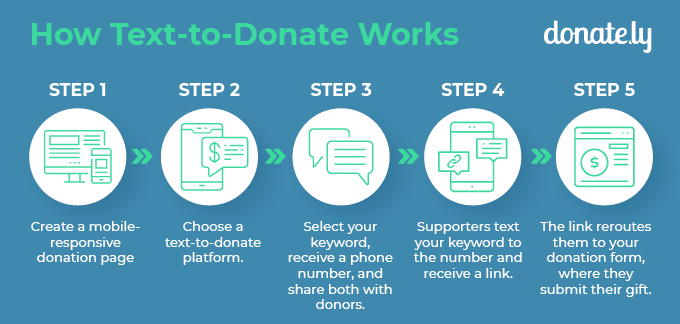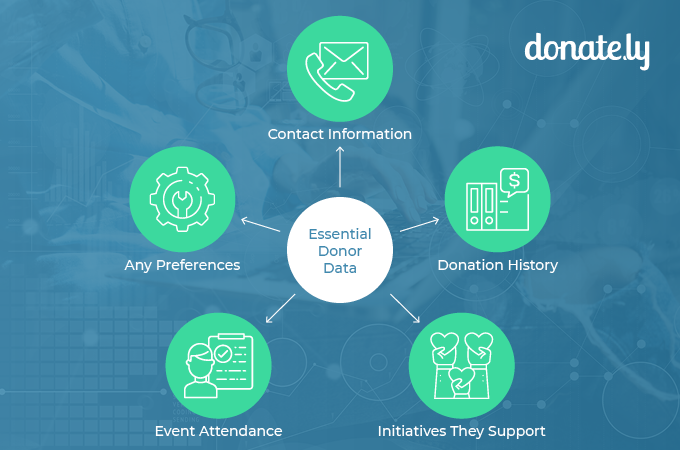Click here to read on Association of Fundraising Professionals.
By Andrew Berry
The pandemic hit the nonprofit sector in ways no one could have imagined. Organizations scrambled to adjust to remote operations, and all the moving parts of running a nonprofit from home quickly became overwhelming for many professionals. Add in a boost in demand for your work in the community, and those pieces require even more attention, decreasing your core fundraising time (and increasing your stress levels).
What naturally happens in situations like this is that potential donors and donations slip through the cracks. Lost income can be detrimental for organizations that are already limited on resources. More than ever, your team should give its attention to remote fundraising and developing donor relationships that outlast the pandemic.
Here at Donately, we’ve helped thousands of nonprofits adjust to the circumstances and continue fundraising despite the distance. We’ve witnessed the tactics that have led to stronger donor relationships, as well as those that haven’t made much headway. We know many nonprofits could use a little extra help right now, which is why we’ve pulled together three remote donor management tips that work for any nonprofit. Here’s what we’ll cover:
- Provide plenty of ways to give.
- Make the most of your data.
- Host virtual stewardship events.
While we might see the light at the end of the tunnel, there’s a long way to go before returning to in-person engagement. Navigating the circumstances may seem out of reach, but with a plan in place, you’ll be well-equipped to provide a more enriching donor experience. Let’s get started.
1. Provide plenty of ways to give.
Not every donor can afford to give in the same exact ways right now, so providing them with a variety of opportunities will help you secure more support. Plus, it’ll convey that you’re conscious of their needs and will go the extra mile to keep them around. Let’s jump into three options you can easily present to donors right now.
Online Donation Page
Donors can’t give to your cause if they can’t figure out where to donate in the first place. Start by developing a standout donation page that makes remote contributions easy. Donately’s donation page guide explains that:
“When an individual decides to contribute to your cause, they’ll head over to your donation page. However, if they find it difficult or cumbersome to submit their information (or worse, if they can’t find your donation form!), they’ll likely abandon their gift altogether.”
When building out your online form, first customize the fields to capture the exact information you need. Make sure you brand your form with your organization’s colors and logo, so donors know they’re in fact giving to your organization. You should also set suggested giving amounts, which donors will naturally use as an indication of how much others are giving (and therefore how much they should be giving).
As an added bonus, make sure you can set up recurring donations to encourage donors to continue supporting your cause well into the future. This makes giving convenient for them since they won’t have to fill out your form each month. Meanwhile, you gain the advantage of a more predictable revenue stream.
No matter how you optimize your form, make sure to direct supporters to it by linking back across all your campaigns and communications. They’ll appreciate the positive online donation experience and will be excited to support your cause from afar.
Text-to-Donate
Mobile giving has quickly gained traction, even more so with the shift to remote operations. In fact, 360 MatchPro indicates that mobile users made up 33% of online donation transactions last year. And with SMS open rates as high as 98%, your nonprofit is likely missing out if you’re not taking advantage of the opportunity.
Make giving more convenient than ever with text-to-donate. If you’re unfamiliar with this opportunity, here’s a quick rundown of how it works:

- Create a mobile-responsive donation page.
- Choose a text-to-donate platform.
- Select your keyword, receive a phone number, and share both with donors.
- Supporters text your keyword to the number and receive a link.
- The link reroutes them to your donation form, where they submit their gift.
Supporters can give from anywhere, at any time. All you need is the right technology, and all they need is a cell phone with internet access. Plus, you can keep using this tool even after returning to in-person engagements. These days, most people keep their cell phones on hand, so no more missing out on donations when donors forget their wallets!
Non-Financial Opportunities
The pandemic has resulted in economic hardship for many people, including your supporters. Even your most passionate donors may not be in a financially-sound position to donate right now. That’s why it’s important to provide other opportunities for them to continue engaging with your cause.
Here are a handful of non-financial engagement ideas your donors will likely jump on board with:
- Volunteering. Many nonprofits have gotten creative with their volunteer programs, either by offering remote opportunities or a safe in-person environment. If your cause needs hands-on help, make sure to hand out safety equipment (like masks and gloves) and enforce social distancing to keep everyone safe.
- A weekly newsletter. Weekly updates keep supporters engaged and up-to-date on your nonprofit’s work. Encourage donors to sign up for your newsletter to stay informed on your progress and to be the first to know about upcoming involvement opportunities.
- Marketing. From social media to word-of-mouth advertising, your donors can help grow awareness for your cause. Ask them to share your social media posts, send out emails to their networks, and call their friends and family to research your cause.
By adjusting to account for those experiencing financial hardship, you’ll convey that you care about their moral support, not just their money. In turn, they’ll be much more likely to stick around and resume donating once things turn around for them.
2. Make the most of your data.
Most donor databases allow you to capture key information about your supporters. This data can then be used to create personalized and meaningful experiences that encourage them to stay involved. Here’s an idea of what donor information nonprofit professionals find most useful to collect:

- Contact information
- Past gift amounts and frequency
- Other initiatives they support
- Events they attend
- Any preferences they express, like communication channels
Some information should flow directly from your other nonprofit software, like when someone fills out your online donation form or registers for an event. However, you should also be able to enter your own notes and create personalized fields that capture the exact details you need. This will ultimately give you a more comprehensive understanding of who your supporters are.
When your systems capture this data, you’ll need a plan for how you’ll use the information for good. After all, tracking donor data is pointless unless you use it.
Look for trends in giving, patterns of donor behavior, and anything supporters have in common. This information can inform your fundraising and communications plans, enabling you to create more targeted appeals.
For example, let’s say you find that fewer donors tend to give in the summer, while many donors consistently give in the fall. With this in mind, you should take advantage of the surge in giving by launching a major campaign in October, rather than in July.
This is just one example of many. What works for another organization might not work for you, so get creative with your strategies by finding new ways to put your data to use.
Donor Segmentation
“Segmentation” is a major buzzword in the nonprofit community. Mastering this approach allows you to make the most of your supporter data. If you’re unfamiliar with this strategy, DNL OmniMedia’s donor segmentation guide describes it as “the act of organizing the donors in your database into groups— segments— based on their shared characteristics.”
When used effectively, donor segments give you the information you need to communicate in more meaningful ways, resulting in better donor relationships. For example, you can:
- Ask for the ideal gift amount at the right time.
- Reach out using their preferred channel.
- Provide the right engagement opportunities.
- Tailor your outreach based on their history.
Rather than broadcasting the same information across your entire constituent base, you can send content that’s tailored to specific segments. That way, your supporters will only encounter content that they’re most likely to respond to and engage with, rather than having to sort through a bunch of irrelevant messages.
3. Host virtual stewardship events.
Like most nonprofits, your organization likely hosts regular fundraising events for donors to give to your cause. However, stewardship events take a slightly different approach. These types of events are used to say “thank you” to your valuable supporters. Instead of providing an opportunity to ask for more money, it allows you to show gratitude for past contributions.
Especially right now when resources are tight, it’s important to express appreciation for those who continue to support your work. You should make the event exclusive by sending invitations to those who have a history of supporting your cause instead of opening it to your entire supporter base. This will help to make it a more intimate and meaningful affair.
While it may seem challenging to host these events remotely, you’ll just need to lean on technology to make it possible. For instance, online platforms (like email and social media) help spread the word, while live-streaming capabilities help you broadcast directly to supporters’ screens.
In any case, you’ll need to start with a core idea that entices people to attend. Here are a couple of effective stewardship event ideas that work in the digital space:
- Online dinner party. While a gala is traditionally a fundraising event, a dinner party doesn’t have to be. Encourage your guests to get dressed up, and consider giving them a voucher for a free to-go meal at a local restaurant. Then, everyone can virtually sit down together, enjoy a meal, and engage in conversation.
- Behind-the-scenes looks. Share an inside look at your programs or your facilities to show all the valuable work your team has accomplished. In lieu of in-person tours and onsite visits, live stream directly to supporters who make your work possible.
Don’t let any opportunities to express appreciation pass you by. Especially with the pandemic’s challenges, stewardship is more important than ever. Conveying to donors (and other committed supporters) how valuable they are to your organization’s continued success will prompt them to stick around for the long haul.
Effective donor management is important for nonprofits during the best of times. Throw in a global pandemic, and it becomes paramount to the success of your organization. While we’re forced to maintain a safe social distance, that doesn’t mean your donor relationships have to suffer. All it means is that you just need to get creative to overcome the distance.
Remember to spend time providing as many ways to give as possible, which will maximize the number of touchpoints each donor has. Then, take advantage of your donors’ data to personalize your communications and make the most out of every interaction. To take your efforts even further, focus on stewardship by setting up virtual events specifically for your most passionate supporters.
By taking the time to build out your donor management strategies, you’ll be well on your way to mastering the remote landscape. Good luck!
Return to Insights & Events
